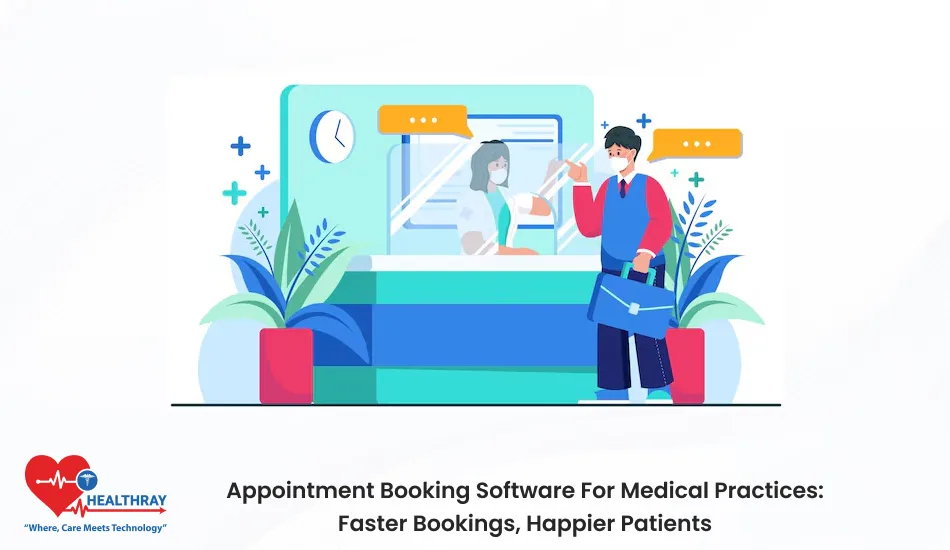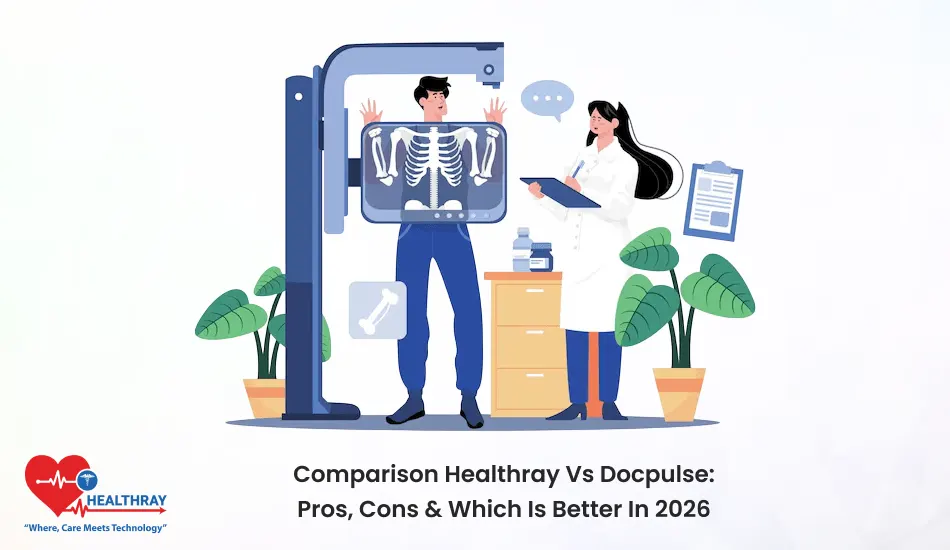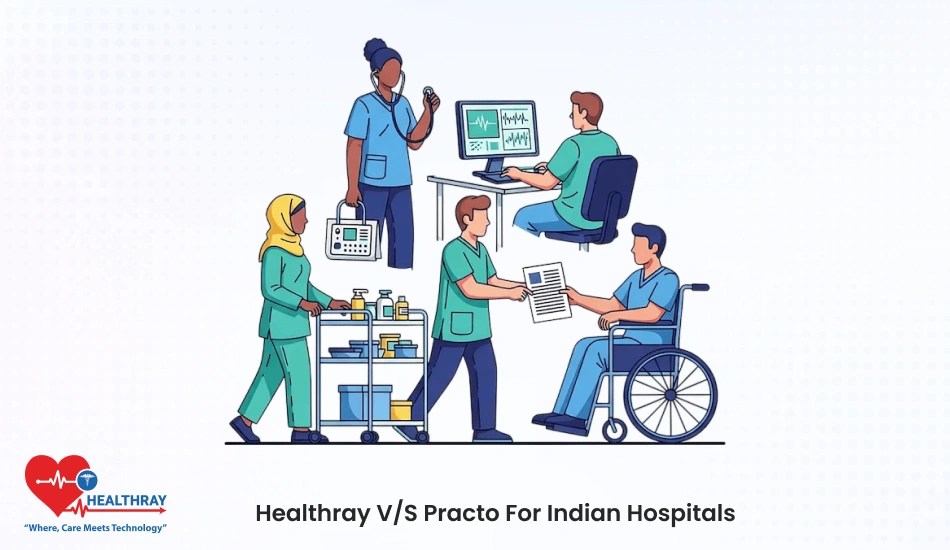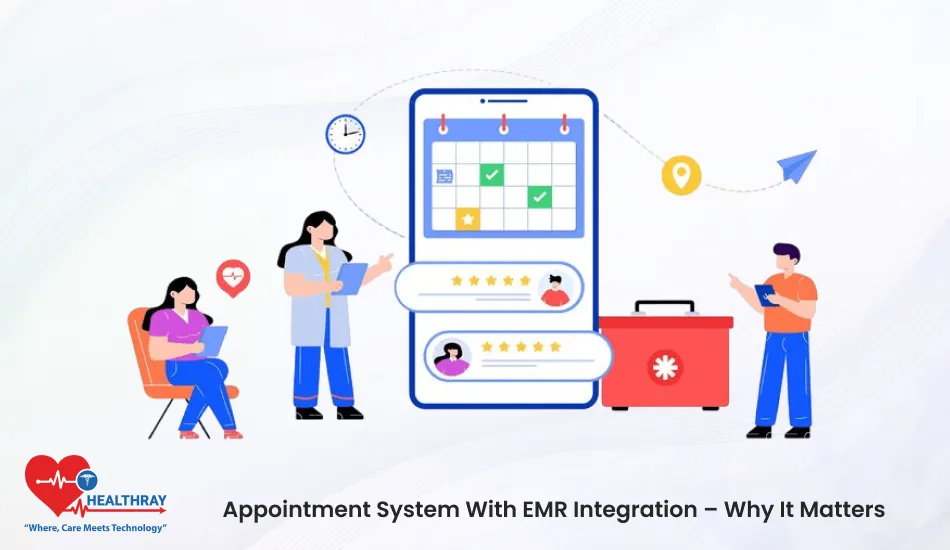Summary
Healthcare is getting a digital glow-up! EHR & Telemedicine Integration empowers doctors to interact with, heal and help patients. Smart EHR software helps medical teams share data in real time, automate workflows and make each consultation faster and smarter.
It’s not just about technology, but seamless care that follows patients everywhere. Find out how integration creates a connected, streamlined and personalized healthcare experience that is ready for the future, today!
Introduction
Imagine that a doctor conducts a virtual appointment, and that all notes, reports and prescriptions are updated everywhere in an instant. Nice and smooth, yes? And that smooth experience is achieved via EHR & Telemedicine Integration.
The healthcare world today operates at a blistering pace, and is all about speed, accuracy and connectivity. No clinician cherishes pursuing data that are scattered, and no patient likes to repeat his or her history. This is where integration comes in, where the EHR software and telemedicine can be considered as one smart environment.
When the system gets real-time updates, less manual errors, and instant access to patient information, it’s a win all around. They free up doctors’ time, improve patients’ care, and build hospitals’ efficiency and trust.
But beyond technology, it is a connection between people, data, and decisions. EHR & Telemedicine Integration makes healthcare more integrated, coordinated and individualized.
So, let’s explore how this digital orchestra helps to shape genuine and cohesive patient journeys.
What is EHR (Electronic Health Record)?
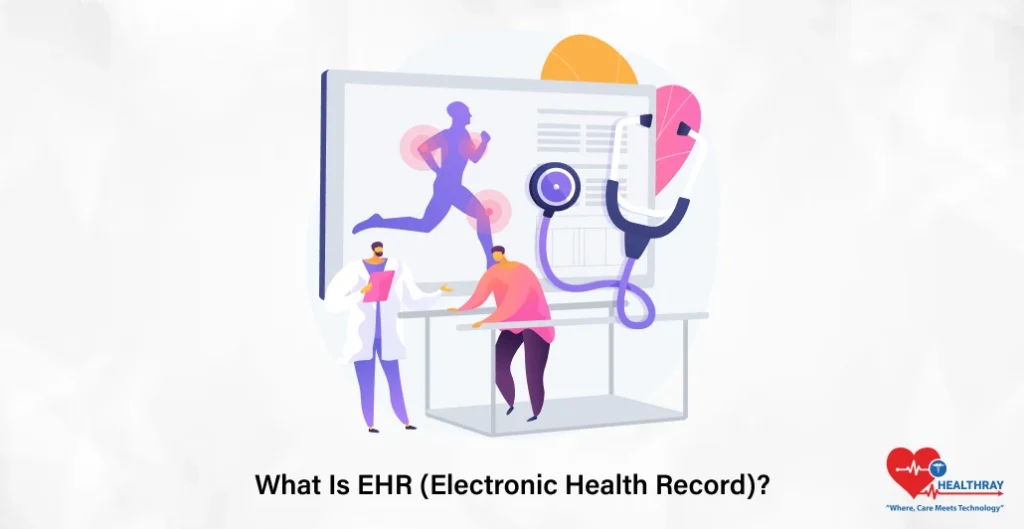
EHR is short for Electronic Health Record. It is basically a digital platform for keeping patient medical records. It stores all of your health details, including test results, prescriptions, allergies and notes from doctors, securely in one place.
In contrast to storing large files on paper, the physicians record, review and update patient documentation on EHR software, which is available to them at any time. Consequently, think of it as an intelligent digital notebook cataloguing the entirety of a patient’s medical narrative.
For instance, imagine a patient comes into the clinic complaining about a fever. The doctor enters the symptoms, diagnosis and medicines into the system. Later on, if the same patient goes to another hospital, that doctor immediately has access to the medical history in full. Thus, there is no ambiguity, not a single lost paper, just simple and quick access to everything. Furthermore, with mobile EHR access for clinicians, doctors can read or update records on their phones, anywhere, anytime.
What is Telemedicine?
Telemedicine is, indeed, medical care on-site through technology such as video calls, apps or phone consultations. Consequently, this connects doctors and patients without having to be at the same location.
For instance, imagine a patient feeling sick at home. They can head to the clinic in an online mode or chat with a doctor in person. In this way, this is all done via a digital platform, which checks their symptoms, provides advice and sends prescriptions.
Moreover, both patients and doctors benefit from telemedicine. It reduces travel, waits and stress. Furthermore, it also allows professionals to reach people in remote or rural areas.
What Is EHR & Telemedicine Integration?
EHR & Telemedicine Integration is connecting digital health records with online consultation tools. Because the two systems share patient data, it provides for the safe and smooth sharing of information across systems.
EHR software can automatically check the patient’s past reports, medicines, and allergies. Since everything is available on one dashboard, there is no requirement to search for files or switch apps. After the telemedicine visit, the same EHR software updates notes, prescriptions and follow-up plans automatically. This saves time and prevents errors.
Moreover, with mobile EHR access for clinicians, doctors can see or edit records while travelling or from the office. It provides continuity and connectivity. Just how is this collaboration, in simple terms, that virtual and physical care work like one crew fast, organized, and focused on the patient.
Why EHR & Telemedicine Integration Matters Today?

EHR & Telemedicine Integration is an essential component of contemporary digital healthcare. It connects patient data, improves coordination, and helps doctors treat patients faster, smarter and more personally.
Benefits for Patient Care and Outcomes
Holistic Patient View
Perhaps the biggest advantage of EHR & Telemedicine Integration is that it allows physicians to see patients’ health from a complete 360-degree angle. With EHR software, all details, including notes, medicines, allergies and past visits, appear together on a single, legible screen.
This holistic perspective enables physicians to make more informed decisions and confidently develop individualized treatment plans. It also helps to avoid redundancy in testing, saves time, and provides clarity in treatment planning.
Unified Health Data
When all health data remains interconnected, care can be smooth and continuous. Each time a patient sees a specialist online, that visit gets uploaded immediately to his or her central medical record.
Then it can be reviewed by the primary doctor before the next appointment. In this way, nothing is lost, and there are no gaps in care. Patients receive uninterrupted care without having to repeat their histories or lug paper folders with them from visit to visit.
Improved Care Coordination
EHR & Telemedicine Integration also enhances teamwork in health care. Doctors, nurses, therapists, and lab staff all see the same data in real time.
But this common knowledge allows everyone to remain synchronised and to enable faster and more accurate decision-making. The telemedicine team and in-clinic team collaborate seamlessly, providing continuity of high-quality care at every stage.
Enhanced Patient Engagement
Patients also actively participate in their care. They can access their test results, notes and prescriptions at any time through linked portals.
They can message doctors, request medicine refills, and schedule tele-visits. This convenience keeps the patient more engaged, remedial in a better way, and more trusting of their care providers.
Benefits for Operational Efficiency and Cost
Streamlined Workflows
EHR & Telemedicine Integration increase operational efficiency across clinics and hospitals. Seamless integration between EHR software and telemedicine eliminates dual data entry.
All updates from video consultations are automatically uploaded to the main system. This is less time-consuming and has less human error, allowing healthcare workers to spend more time on care and not paperwork.
Cloud-Based Collaboration
For cloud-based EHR systems, data can be accessed securely, anytime and anywhere. Medical professionals with the necessary permissions can work with each other from anywhere, access patient records in real time and exchange findings without waiting.
This expedites team processes and makes decisions more dependable. The cloud is now a powerful enabler of improved patient care and faster medical response.
Step towards digital era with our healthcare solution
Revamp your hospital facilities and embrace change for better healthcare management. Ease in managing and organizing large medical datasets leads to effective analysis. Seize the opportunity now!
Reduced Administrative Burden
Hospitals and clinics save administrative time on billing, scheduling, documentation, and more as well. These functions are integrated into systems that automate these processes, relieving staff of this work and eliminating human error.
Doctors spend less time organizing data and more time treating patients. Nurses and administrators have improved workflows, and managers are able to monitor efficiency in real time.
Cost Savings and Flexibility
EHR & Telemedicine Integration also has economies of scale over time. Hospitals are saving paper, storage, and staff hours, and patients are saving in travel and appointment costs.
With the EHR software doing most of the routine work, there is more efficient use of resources. Mobile EHR access for clinicians allows them to regularly update and access patient records on home visits, during ward rounds, and even on the road.
Benefits for the Patient and Provider Experience
Personalized and Connected Care
At the core of the healthcare system are the experiences of patients and providers. EHR & Telemedicine Integration changes this experience to be more personal and connected.
Having the complete medical history of a patient available through EHR software allows each doctor’s visit to be more effective. The doctor already knows what medicines to prescribe, what worked and what should be better. This builds trust and is time-saving for both sides.
Real-Time Access and Better Collaboration
Mobile EHR access for clinicians allows them to consult reports, lab results, or images during the tele-visit and enter notes in real time. This provides a seamless and instant experience for everyone concerned.
With cloud-based EHR systems, doctors can manage in-person and virtual appointments from one secure dashboard. This minimizes confusion and keeps patient information secure and always up-to-date.
Improved Access to Care
With the help of EHR & Telemedicine Integration, the organization can expand its medical services to remote areas as well. Rural patients can get good care without long trips and waits in crowded hospitals.
Doctors, on the other hand, can provide high-quality consultations and follow-ups online and remain connected with the whole of their patient data through EHR software.
Collaboration and Data Security
With cloud-based EHR systems, it is simple for physicians in separate locations to work together in real time. A specialist in one city and a primary care provider in another can use the same record and make decisions together.
This fast working together gives prompt and more accurate treatments. Simultaneously, rigorous encryption and access control keep data secure and private, warding off the risk of breach of patient trust.
Tips to Successfully Carry Out EHR & Telemedicine Integration

Implementing EHR & Telemedicine Integration takes planning, patience, and the right approach. Here are some tips to carry out this integration successfully:
Picking the Right EHR Software
The first step towards successful implementation is choosing the right EHR software. In addition, telemedicine systems should be seamlessly integratable into the system, and furthermore, the sharing of data should occur seamlessly without delays or errors.
Emphasize Data Compatibility and Standardization
It is important for the data to speak the same language irrespective of the systems they are in. To this effect, hospitals should employ standards such as HL7 or FHIR. Consequently, this allows the EHR software to exchange data properly.
Make Sure Staff is Trained
The best tools are useless if there is no training. Specifically, everyone from the doctors and nurses to the administrative teams must be adept at working with the integrated system. Therefore, they should be trained enough on how to feed and update patient information.
Fortify Data Privacy and Security
Security ought to be a top priority. In fact, medical records are safe in the cloud because confidential information is heavily encrypted. Therefore, access should be role-based so that only those with authorisation can view or edit records.
Plan Phased Implementation
The implementation should be done in small steps. It is because doing it all at once can create confusion. For instance, start with one department or service, pilot it, fix it and then expand.
Have Strong Technical Support
A dedicated technical team is key. It is because they can do the maintenance work, carry out upgrades, track performances, and identify problems. Furthermore, reliable IT support will keep the integrated system running and updated with new features.
Allow for Mobile EHR Access for Clinicians
Moreover, flexibility is important in order for integration to work smoothly. Specifically, the software for EHR should allow clinicians and doctors to check patients’ records, write notes and do consults from any location using mobile EHR.
Get Feedback and Improve
Always solicit feedback from both doctors and patients once it is in place. As a result, it showcases what aspect needs improvement and what works well.
Conclusion
EHR & Telemedicine Integration connects the physical and digital healthcare worlds in this fast-paced contemporary landscape. Moreover, using the right EHR software and secure cloud-based EHR systems, physicians can provide faster, safer, and more connected care.
Consequently, integration does not simply provide a technical upgrade but also shifts toward better outcomes, increased efficiency, and greater patient trust. Ultimately, healthcare’s future integrates intelligence and operates continuously.


